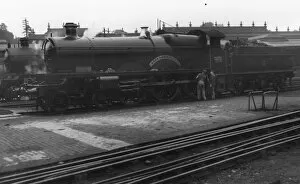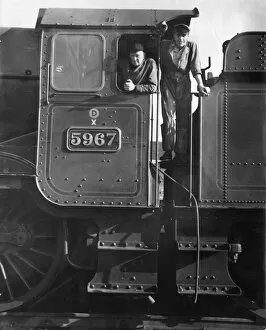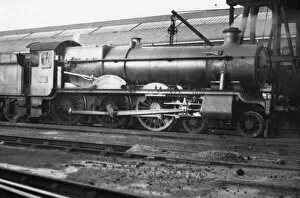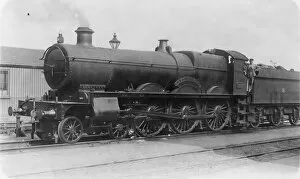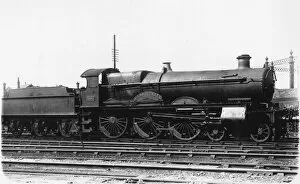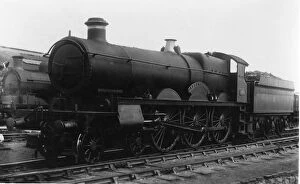4 6 0 Collection (page 3)
"Powerful and Majestic: The Legacy of the 4-6-0 Locomotives" Step back in time to Swindon Shed in 1930, where seven King Class locomotives proudly stood
All Professionally Made to Order for Quick Shipping
"Powerful and Majestic: The Legacy of the 4-6-0 Locomotives" Step back in time to Swindon Shed in 1930, where seven King Class locomotives proudly stood, ready to conquer the rails. These magnificent machines were a sight to behold, their sleek frames exuding power and elegance. Fast forward to Shrewsbury in 1964, and we find No. 7820 Dinmore Manor of the Manor class still going strong. This 4-6-0 beauty had weathered the years with grace, a testament to its enduring design. Amongst these legendary locomotives was No. 6000, aptly named King George V. A true titan on the tracks, it commanded respect wherever it went. And not far behind was No. 6027, known as King Richard I since its birth in 1937 - a regal presence indeed. Intriguing stories unfolded alongside these engines; one such tale involved Locomotive No. 5993 Kirby Hall and its dedicated driver Simms and fireman Evans who tirelessly guided her through countless journeys. No discussion about this iconic class would be complete without mentioning No. 6800 Arlington Grange - an engine that captured hearts with both its performance and striking appearance. Venturing further into history brings us to Dawlish in 1933 when another King Class locomotive graced our sights - a symbol of engineering excellence hurtling through time at incredible speeds. And let's not forget No. 6004 King George III from 1931; this majestic machine left an indelible mark on railway enthusiasts' memories with every chuffing breath it took. The Modified Hall class also made waves during the '60s era as evidenced by No. 7903 Foremarke Hall at Bath Spa station – proving that innovation could enhance even established designs like the trusty old "Hall" class. No.


